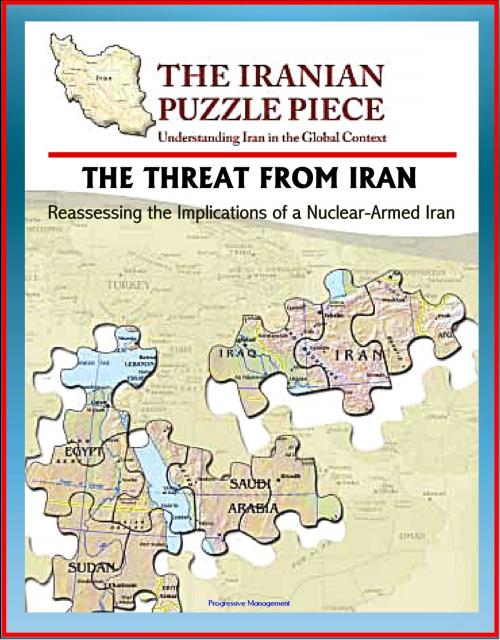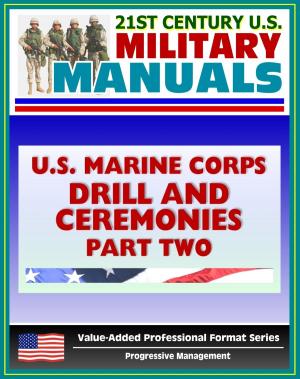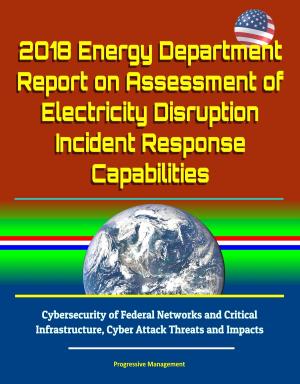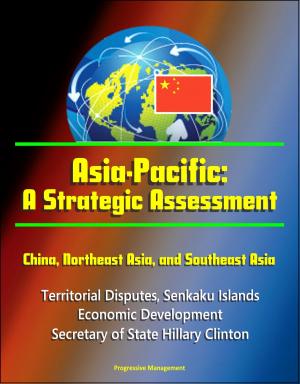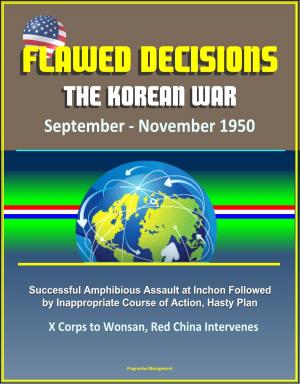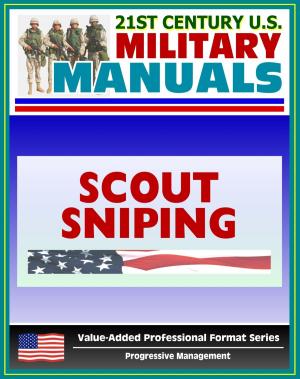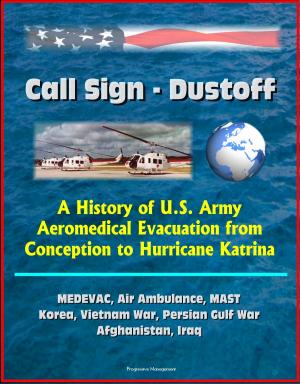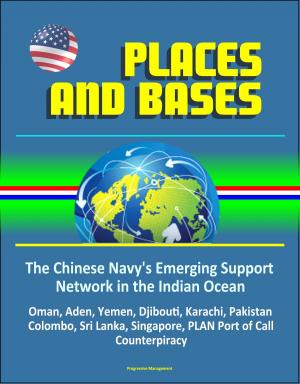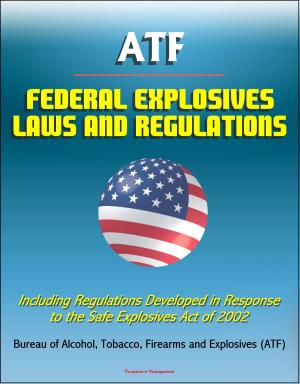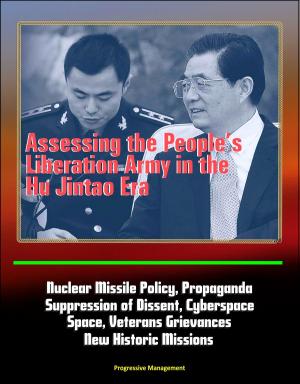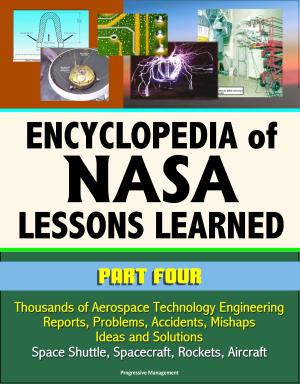The Threat from Iran: Reassessing the Implications of a Nuclear-Armed Iran and the Iranian Puzzle Piece - Understanding Iran in the Global Context
Nonfiction, Social & Cultural Studies, Political Science| Author: | Progressive Management | ISBN: | 9781301156542 |
| Publisher: | Progressive Management | Publication: | January 8, 2013 |
| Imprint: | Smashwords Edition | Language: | English |
| Author: | Progressive Management |
| ISBN: | 9781301156542 |
| Publisher: | Progressive Management |
| Publication: | January 8, 2013 |
| Imprint: | Smashwords Edition |
| Language: | English |
Reassessing the Implications of a Nuclear-Armed Iran: Can the United States live with a nuclear-armed Iran? Despite strong policy preferences to the contrary, Washington may have little choice. Evidence suggests, and most scholars agree, that Iran is working toward self-sufficiency in a complete nuclear fuel cycle that would enable it to produce nuclear weapons. Building on an earlier study from 2001, this paper reexamines Iran's movement toward becoming a nuclear-weapons state and the implications of that development for stability in the Middle East, global nonproliferation efforts, and U.S. security and defense policy. The original study postulated that Iran was determined to acquire nuclear weapons and the long-range missile systems needed for their delivery, and, in fact, was well on its way to achieving those objectives. Four years later, the world is a different place: the terrorist attacks of September 11, U.S. intervention in Afghanistan and Iraq with their subsequent developing democracies, and new evidence of Iranian acquisition of nuclear weapons-related technologies all necessitate a reexamination of a nuclear-armed Iran.
Contents of Reassessing the Implications of a Nuclear-Armed Iran: Chapter One - Iran's Perspective: National Rights and Nuclear Weapons * Chapter Two - Neighbors, Negotiators, and Nonproliferators * Chapter Three - U.S. Policy Options * Appendix A - Timeline of Iran's Path to Nuclear Weapons * Appendix B - Iran's Nuclear Program: Status, Risks, and Prospects * Appendix C - Walking the Tightrope: Israeli Options in Response to Iranian Nuclear Developments
The Iranian Puzzle Piece - Understanding Iran in the Global Context: The Islamic Republic of Iran, birched from the legendary Persian Empire, remains a complex blend of fact and narrative. It is this complexity that shapes Iranian national identity, polities, and strategies and defines its relations with others. The web of fact and fiction; history and legend; reality and perception bodes well for poetry, but it presents a challenge for political decision making in an international arena where waters are already muddied. A symposium at Marine Corps University sought to clarify the waters-—to examine the "puzzle piece" labeled Iran and understand how it fits into the larger, global puzzle. Out of that symposium came these papers, which provide insight into the multifaceted nature of Iran and its regime, examine the feasibility and possible outcomes of official engagement of the regime, and discuss the domestic, regional, and international implications of Iran's nuclear ambitions.
Contents of The Iranian Puzzle Piece - Understanding Iran in the Global Context: Chapter One: Iran Under Ahmadinejad * Chapter Two: Talking to Tehran: With Whom, About What, and How? * Chapter Three: When U.S.-Iranian Negotiations Start: A Primer * Chapter Four: The Iranian Nuclear Issue * Chapter Five: Iran's Policies and Iraq * Chapter Six: Iran in the Israeli Threat Perception * Epilogue: The 2009 Iranian Presidential Election and Its Implications
Reassessing the Implications of a Nuclear-Armed Iran: Can the United States live with a nuclear-armed Iran? Despite strong policy preferences to the contrary, Washington may have little choice. Evidence suggests, and most scholars agree, that Iran is working toward self-sufficiency in a complete nuclear fuel cycle that would enable it to produce nuclear weapons. Building on an earlier study from 2001, this paper reexamines Iran's movement toward becoming a nuclear-weapons state and the implications of that development for stability in the Middle East, global nonproliferation efforts, and U.S. security and defense policy. The original study postulated that Iran was determined to acquire nuclear weapons and the long-range missile systems needed for their delivery, and, in fact, was well on its way to achieving those objectives. Four years later, the world is a different place: the terrorist attacks of September 11, U.S. intervention in Afghanistan and Iraq with their subsequent developing democracies, and new evidence of Iranian acquisition of nuclear weapons-related technologies all necessitate a reexamination of a nuclear-armed Iran.
Contents of Reassessing the Implications of a Nuclear-Armed Iran: Chapter One - Iran's Perspective: National Rights and Nuclear Weapons * Chapter Two - Neighbors, Negotiators, and Nonproliferators * Chapter Three - U.S. Policy Options * Appendix A - Timeline of Iran's Path to Nuclear Weapons * Appendix B - Iran's Nuclear Program: Status, Risks, and Prospects * Appendix C - Walking the Tightrope: Israeli Options in Response to Iranian Nuclear Developments
The Iranian Puzzle Piece - Understanding Iran in the Global Context: The Islamic Republic of Iran, birched from the legendary Persian Empire, remains a complex blend of fact and narrative. It is this complexity that shapes Iranian national identity, polities, and strategies and defines its relations with others. The web of fact and fiction; history and legend; reality and perception bodes well for poetry, but it presents a challenge for political decision making in an international arena where waters are already muddied. A symposium at Marine Corps University sought to clarify the waters-—to examine the "puzzle piece" labeled Iran and understand how it fits into the larger, global puzzle. Out of that symposium came these papers, which provide insight into the multifaceted nature of Iran and its regime, examine the feasibility and possible outcomes of official engagement of the regime, and discuss the domestic, regional, and international implications of Iran's nuclear ambitions.
Contents of The Iranian Puzzle Piece - Understanding Iran in the Global Context: Chapter One: Iran Under Ahmadinejad * Chapter Two: Talking to Tehran: With Whom, About What, and How? * Chapter Three: When U.S.-Iranian Negotiations Start: A Primer * Chapter Four: The Iranian Nuclear Issue * Chapter Five: Iran's Policies and Iraq * Chapter Six: Iran in the Israeli Threat Perception * Epilogue: The 2009 Iranian Presidential Election and Its Implications
